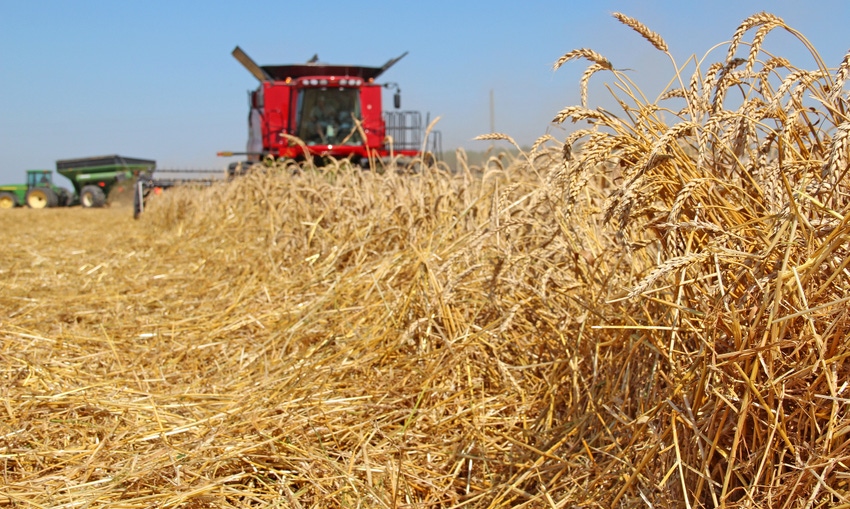
The Black Sea Grain Deal made it possible for Ukraine to continue to ship goods amid the Russia-Ukraine conflict. On August 1, 2022, five months after the Russian invasion of Ukraine, the first Ukrainian grain ship left the port of Odesa, marking a time when Ukraine safely exported grain, fertilizer, and other products.
On July 17, 2023, nearly a year after its implementation, Russia left the deal and will no longer abide by the rules set in place by the Black Sea Grain Deal. We look at which agricultural markets will be impacted and provide implications for each market.
Ukraine ranked 3rd among global competitors for corn exports but is projected to fall to 4th in the 2023/2024 marketing year while ranking 7th in production (USDA-FAS, 2023). Ukrainian corn exports accounted for 15% of global exports in the 2022/2023 marketing year and are projected to drop to 9.6% in the 2023/2024 marketing year (Figure 1).

Despite Ukraine’s relatively high ranking in the corn export market, global ending stocks are projected to increase from 11.71 billion bushels to 12.36 billion bushels, carried by a projected record production of 15.27 billion bushels in the United States.
Russian corn
Russian corn exports accounted for a smaller portion of total exports at 2.4% of global exports during the 2022/2023 marketing year, with corn exports projected to fall to 2.1% of global exports in the 2023/2024 marketing year.
The top 3 wheat exporters in the world are Russia, the European Union, and Canada, while Ukraine ranks 7th among global competitors (USDA-FAS, 2023; Figure 2).

Ukrainian wheat exports accounted for 7.5% of global exports in the 2022/2023 marketing year and is projected by USDA to drop to 5.0% in the 2023/2024 marketing year.
Russian wheat exports accounted for 21% of global exports in the 2022/2023 marketing year and is projected by USDA to increase to 22% in the 2023/2024 marketing year.
According to the Food and Agricultural Organization, Russia ranks 1st, 2nd, and 3rd in Nitrogenous, Potash, and Phosphate fertilizer exports. At the same time, Ukraine only accounts for 2% of Nitrogenous exports and a smaller amount of Phosphate and Potash fertilizers.
Fertilizer prices
Fertilizer prices increased at the start of the Russian-Ukraine conflict due to Russian supply shocks. Russia’s exports and production are expected to be uninhibited by the Black Sea deal. The same holds for Russian ally Belarus, the third largest global potash exporter behind Russia and Canada.
The initial cancellation of the grain deal on the 17th did not significantly affect futures as the market likely already accounted for the cancellation.
We saw a small rally in the futures prices for corn, soybeans, and soft red winter wheat that returned to market-open price levels by market close. However, Russia escalated Ukrainian export problems on July 18th by launching a missile strike on the Port of Odesa. Some reports indicate that critical port infrastructure was destroyed, and Russia is trying to stop grain exports (Reuters & The Hill, 2023).
Ukrainian war
Continued attacks on Ukrainian ports could cause supply shocks, increasing the volatility of markets speculating on U.S. crop conditions and weather. Combining the recent missile strikes with a fall in forecasted July precipitation, the harvest-time futures price of corn and wheat have increased by $0.40 and $0.70, respectively, as of July 19th. Recent gains in wheat prices are likely due more to the Ukraine/Russia situation than weather while corn is a combination of both.
Moving forward, markets will likely be affected by the Russian/Ukrainian conflict, weather, and crop conditions, increasing price volatility.
Approaching harvest 2023, producers should take advantage of relatively higher corn prices now, before the weather risk premium associated with speculation on weather and crop conditions reduces to zero.
As September approaches and winter wheat harvest progresses, the wheat price typically falls due to an influx of market supply and rebounds after the glut of harvest supplies exits the market.
Source: Southern Ag Today
About the Author(s)
You May Also Like




